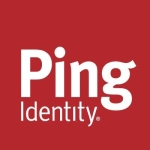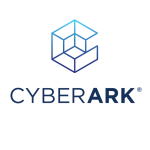What is our primary use case?
Our final goal is the entire process of identity management including provisioning, de-provisioning, roles-based access, review-based access, and things like that, but first, we needed to replace the old legacy system. That was successfully done last summer.
The main business case was realizing a unique joined identity process because we have students and we have employees. We have external contractor employees, and we have partners who work for our organization and need digital or physical access to our environment. Because of that, Avans wants to use a single identity and an identity for life. If a student who once studied at Avans becomes a teacher or an ICT employee five or ten years later, he or she should have the same identity back with the same UPN or email address, so we have to guarantee an account for life.
Because of the source systems, we know it is a student, which studies they do, and, for employees, we know which department they work for and if they are a teacher or non-teacher personnel and things like that. Based on all those attributes, we have business rules guiding them towards a set of rights. From the moment they agree on the standard basic rules, we get their accounts created. We allow them to have access to that particular account. After the account is created, group memberships are assigned. Through runbook script, Omada sets the right into our Azure Entra ID environment.
How has it helped my organization?
Every implementation has some hurdles. Not everything goes 100% smoothly. In our organization, we have a lot of processes and an enormous amount of students starting the study year on the first of September. During this period, we have a lot of students coming in. We have been able to clear any hurdles because everything is traceable within Omada, and we also got the help of the Customer Success engineer from Omada. We were able to pinpoint any problem that would have impacted not only one person but hundreds or thousands of students or employees. In a very short duration, we were able to solve all the problems. That gave me a good feeling. We were expecting problems, but when any problem occurred, they were flexible and very fast in providing answers and solutions.
We did an evaluation almost three years ago in which Omada won. Within Omada, a lot of things are possible, and we have used only a few features. We had a go-live in July, and we are now closing the last features that are a part of the delivery plan for the go-live. So far, the implementation that we have is a replacement of the business logic of our old system. We are aware that Omada Identity can do more, but first, we need 100% synchronization with systems like Azure Entra ID. We are not there yet, but we are aware that it is possible. We have a standard way of onboarding, so we also know what to do when someone leaves a branch to remove those rights. However, within our organization, we still have other groups that are given access manually within other systems. We first have to synchronize with those systems or align with those systems before we can use Omada Identity to take control of removing an employee's access as soon as that employee leaves our organization.
We use Omada Identity for role-based access, but it is still very basic. It is on our roadmap for this year to continue with role-based access and provide departments and teams with the ability to add people to their environment based on the workflows available in Omada for group membership. The group membership is done by roles, and based on what kind of role someone has, the person is provided with certain software licenses, certain applications, certain data structure rights, etc.
Omada Identity has helped to automate reviews of access requests and reroute them to the appropriate people.
Omada Identity has had a good impact on our IT Team's operations efficiency. More and more things are automated. Only a few steps require manual decision-making. Its effect is very positive on our daily activities, and it will improve more and more.
What is most valuable?
What I like most is that we can always find a solution, and we can also find the cause when something goes wrong. I like that the most because everything is in one way or another traceable. That is what I like most. I like its reliability.
Omada keeps on releasing new features within their product. We also have our own functional features. The roadmap of Omada quite aligns with our roadmap. The features available in Omada Identity suit our business case.
What needs improvement?
In our organization, all the data is event-driven, which means that if an attribute is changed in the source system, it can be updated within a few seconds in all end-user systems. There is room for improvement in Omada regarding that. Omada is still batch-based for some processes, so sometimes it can take an hour or even four hours before the execution is run and the update is sent. We know that 100% real-time synchronization is not possible. There is always a delay because of system utilization and things like that, but we try to achieve near real-time. If someone is locked out for a reason, we want to find the reason, resolve the issue, and resume the access for that user to enable him or her to log in within a few minutes. With Omada Identity, sometimes, it takes a quarter, and sometimes, it takes more than an hour. It sometimes also takes more than a day before access is given back to their user. There is always a good explanation for that, but that does not bring us as real-time as we want it to be. In the future, Omada should move towards a real-time and event-driven system.
For how long have I used the solution?
We have been using Omada Identity since July last year. We have been implementing it for two years upfront.
What do I think about the stability of the solution?
It is stable. I would rate it a nine out of ten for stability.
What do I think about the scalability of the solution?
We have about 32,000 students, but that number fluctuates. Overall, we have about 4,800 identities for the staff. Some of the teachers work only one or two days, and some of the interns work only a few days.
It is very capable of scaling based on the needs of our organization. We have just started. We have to see how things go in the future, but I am very confident of that.
How are customer service and support?
So far, we have Mads as our customer success manager. He is a very good engineer. He is almost a part of our team, so that works fantastic. We are now closing the go-live, and as we start using more and more roadmap features ahead, I hope that Mads will keep that connection with Omada for us. That was the biggest part of the success.
How would you rate customer service and support?
Which solution did I use previously and why did I switch?
We had a Novell solution based on Novell directory services, and later on, that changed to the Micro Focus NetIQ solution. In addition, as our IBM tooling, we had a home-built database platform where we had some processes provisioned. They have already been migrated to Omada, and there are still some more to come.
Avans University is quite ambitious. As per our goals that we wrote down a few years ago, by 2025, we want to be more flexible. We wanted to provide students with a more flexible way of doing their studies. Until now, students come to an institute and do a course, and in that course, the path is already defined. The future students would be in control of their own study much more than in the past. A student in the future can decide to have a part of its curriculum from Avans and another part from Amsterdam University or another university. When they have enough certificates within a branch, they get their degree. It is no longer required that everything is done within one institute, so a student can follow a particular course, and then follow another course in another city or institute. For us to be able to do that, we have to be more flexible. We have to have a system that can cope with a lot of changes coming in the near future. The solution we had was not capable of doing that, so we ended up doing a new tender and looking for a solution that was cloud-based and flexible enough for a constantly changing environment. Our organization will constantly change, and the IAM system must be flexible enough to cope with that.
Omada has not helped us consolidate disparate systems for access management. We replaced the old system, so that is a one-on-one replacement. Now that we have installed it, we can start using Omada for workflows and things that we have automated in other systems. In the future, we will have more processes provisioned through Omada. It will start helping us there.
How was the initial setup?
For us, it is a SaaS solution. Omada was one of the top solutions in our tender because of the capability of doing all from the cloud. Its implementation took us about two years.
In terms of maintenance, we have to execute the updates ourselves. Omada tells us that there is a new release, and we can execute it ourselves. Within a time period, we can allow it to happen, which is nice. Within the system, we also have our configured workflows. We have to keep checking that everything is running properly. When there is an update done by Omada, we test it in staging before releasing it in production. We want to ensure that our most important flows are doing exactly what they are supposed to do. That is what I call maintenance.
What about the implementation team?
Omada used a value-added reseller to do the implementation, and things went wrong there. They were not capable of doing SaaS implementations. They were capable of doing on-prem implementations. We were the first or second SaaS customers, and they were not capable of delivering the solution we requested in our tender, but we knew that Omada was capable of doing so. Omada then took over in March or April 2023, so the actual implementation started in March or April, and we went live in July 2023. At the end of February 2024, we are closing the activities from that go-live in July. For me, it was successful when we directly got it implemented from Omada.
When Omada took over, there were no issues at all. They provided us with what we needed. The most important feature for us was the identity join check process for which we needed an improvement. It was quite a big improvement, but Omada fixed it with extra code, specially built for Avans.
I would rate Omada's implementation services an eight out of ten, and I would rate the third-party provider one out of ten for the effort.
What's my experience with pricing, setup cost, and licensing?
It is not cheap. It is expensive, but compared to what we did almost three years ago, it is value for money. It is worth it.
What other advice do I have?
I would recommend Omada Identity if you are an institute like Avans or an enterprise. If you are a small business, I would not recommend it.
We plan to use more features as we go on. We will use the governance features of Omada Identity as we go on. We have not prioritized the governance features of Omada. They are very important to us, but we have to first align and connect a lot more systems before we can fully profit from the governance possibilities. Similarly, we have not yet used Omada Identity Analytics. Our go-live implementation was a replacement of our old system. Since then, we have released some of the end-customer features, and now we are starting with extra features.
Within the educational IT environment, security is our top priority. It has always been a priority and in the future, we need to prioritize that more and more. Omada helps us, but our Security and Safety department itself has ICT security as the top program running right now where security must be in every part of our environment at every second and in every decision we make. Having Omada implemented during that program makes us aware that we are quite good, but there is always room for improvement. Omada can help us with that a lot.
Omada Identity has not yet saved us time. We have mostly replaced the functionalities that we had from our old system. In the near future, we will have more automatic provisioning. People will also be able to provision other colleagues and things like that. It will help us a lot in terms of time savings, but so far, the time savings are similar to what we have had in the last five years.
Overall, I would rate Omada Identity an eight out of ten.
Disclosure: PeerSpot contacted the reviewer to collect the review and to validate authenticity. The reviewer was referred by the vendor, but the review is not subject to editing or approval by the vendor.

















